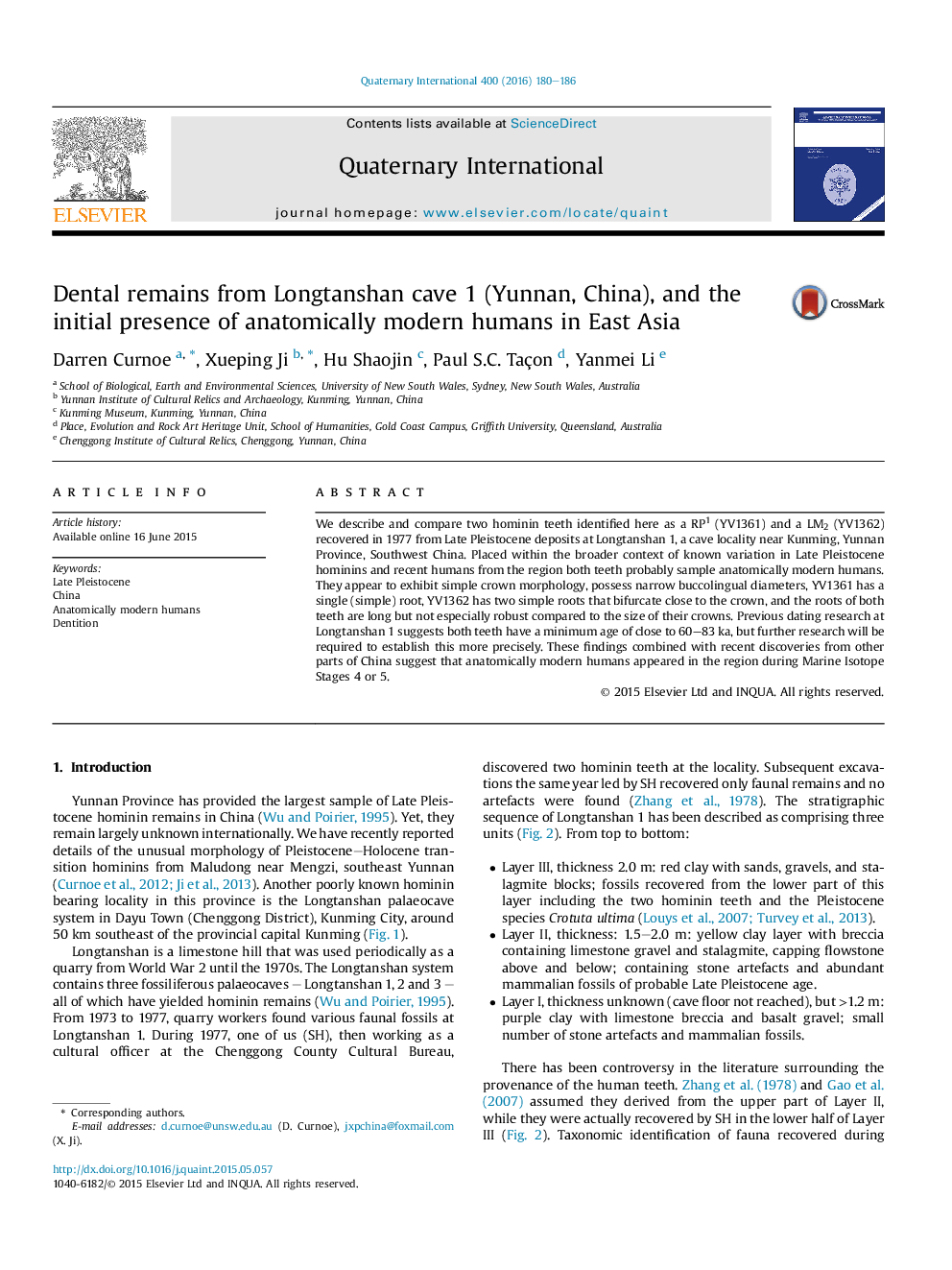| Article ID | Journal | Published Year | Pages | File Type |
|---|---|---|---|---|
| 1040228 | Quaternary International | 2016 | 7 Pages |
We describe and compare two hominin teeth identified here as a RP1 (YV1361) and a LM2 (YV1362) recovered in 1977 from Late Pleistocene deposits at Longtanshan 1, a cave locality near Kunming, Yunnan Province, Southwest China. Placed within the broader context of known variation in Late Pleistocene hominins and recent humans from the region both teeth probably sample anatomically modern humans. They appear to exhibit simple crown morphology, possess narrow buccolingual diameters, YV1361 has a single (simple) root, YV1362 has two simple roots that bifurcate close to the crown, and the roots of both teeth are long but not especially robust compared to the size of their crowns. Previous dating research at Longtanshan 1 suggests both teeth have a minimum age of close to 60–83 ka, but further research will be required to establish this more precisely. These findings combined with recent discoveries from other parts of China suggest that anatomically modern humans appeared in the region during Marine Isotope Stages 4 or 5.
